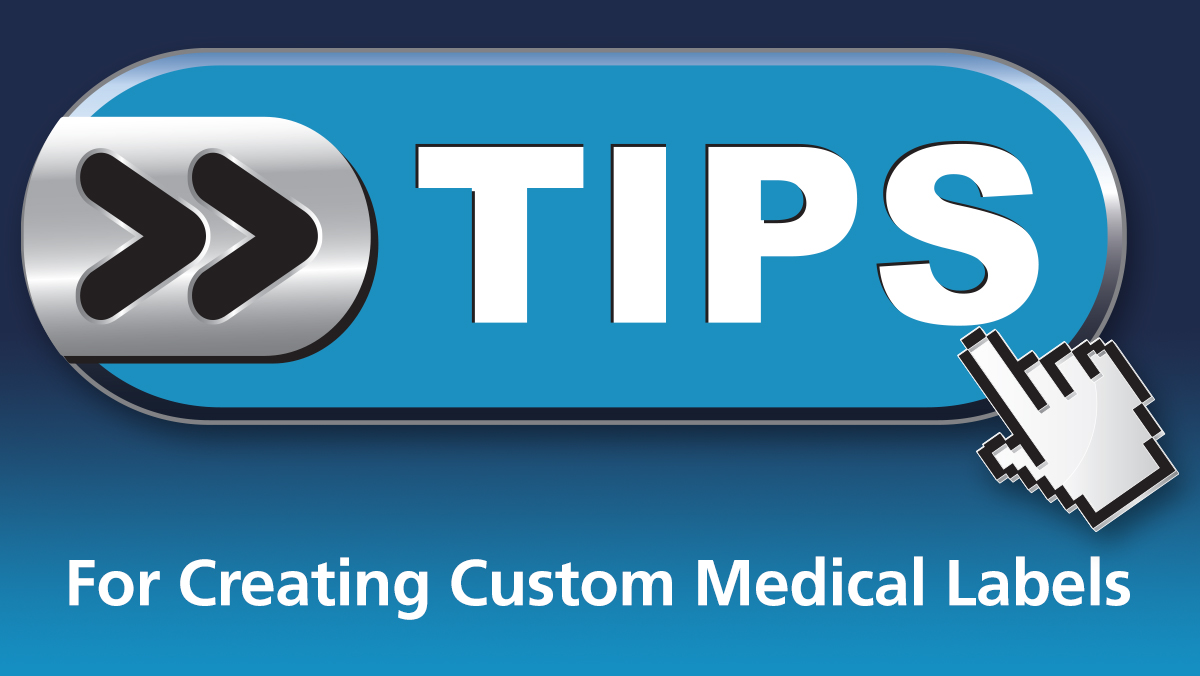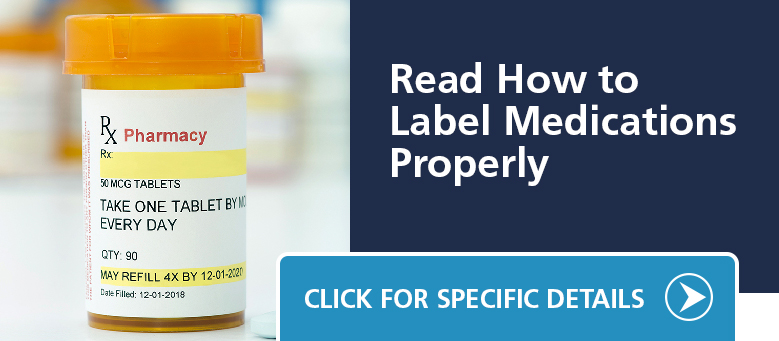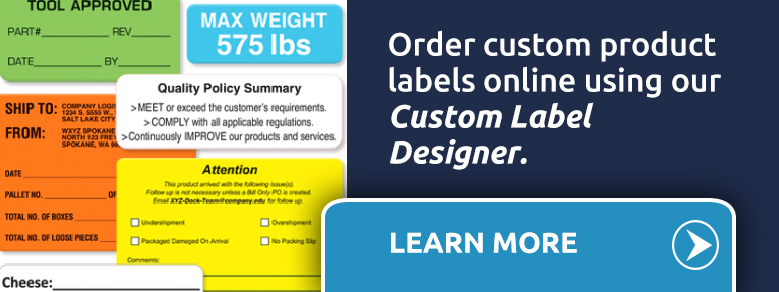Consumer brand companies employ high-end designers to create product labels that stand out on the retail shelf. But for the typical healthcare organization, graphic designers are a rare luxury. So when you need a custom medical label to meet a compliance guideline or provide useful staff communications, that responsibility usually falls on someone without significant label or design knowledge. And when that occurs, use these tips for creating custom medical labels to simplify the process.
What Are Custom Medical Labels?
Custom medical labels identify unique medical treatments and protocols. They guide healthcare workers through a variety of workflows ranging from patient care to equipment maintenance and more. A custom medical label serves as an excellent visual reminder of protocols and a perfect vehicle for reinforcing verbally communicated procedures.
Prescription labels are one common custom medical label application. Each one must contain key data points that direct correct administration.
For example, a pharmacy label contains key information that accompanies IV, oral, tablet and compound medications when they are dispensed for patients. Plus, prescription labeling is necessary when restocking Pyxis and Omnicell stations.
In addition, as hospital pharmacy departments expand beyond filling prescriptions for inpatient needs to serving outpatients as a retail pharmacy does, pharmacy labels are an essential element. Ultimately, a custom pharmacy label that adheres to consistent specifications is critical to ensure that patient safety and compliance standards are met.
Benefits of Custom Medical Labels
With the availability of stock healthcare labels designed for common medical applications - UAL carries over 4,500 items - what is the benefit of a custom medical label? They allow you to communicate in a very specific way based on the unique needs of your operation. To illustrate, a typical 200-bed hospital uses 165 unique labels, often a mix of stock and custom items. Those custom label applications include items designed to meet specific protocols, aid patient safety, guide processes or detail location-specific information.
Here are a few common medical label applications:
- Medication - Distinguish anesthesia drug labels and dosage amounts through different colors, stripes and borders
- Pharmacy - Detail the data points required on a pharmacy label by the FDA and provide the medication instructions to help insure proper medication administration by the clinical staff and patient
- Nursing - Communicate instructions such as ‘Contact Nursing When Supply Is Under 10 Units’
- Biomedical - Label equipment with facility name, department and phone number or service company name and number
- Laboratory - Handle, store and track specimens using your consecutive numbering and barcode series.
Although a custom medical label typically contains a simple message, an effective design is imperative to ensure the information is communicated effectively.
Tips For Creating Custom Medical Labels
When designing a custom medical label, color, fonts, typeface and the use of graphics are all important considerations. While a thoughtful design may seem unnecessary for labels with few characters, each element can significantly impact the message.
To ensure your label design creates the desired impact, consider these tips.
Color Choice
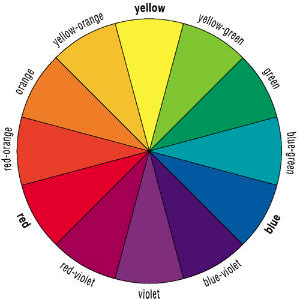
In fact, your color choice may be dictated by an ISMP guideline or internal brand standards. But depending upon your application, the emotions that colors convey can also guide your selection. In general, this is how people perceive these colors:
- Red - important
- Yellow - caution
- Green - action
- Blue - trustworthy
- Black - powerful
- White - clean/healthy
For example, using a yellow background color on a medication instruction label for an infrequently used medication will draw extra attention to the message. What’s more, a red background on an infection control sign increases its perceived importance and contributes to hand washing compliance.
Typeface And Fonts
Similar to colors, typeface and fonts can influence your message’s impact. The difference between typeface and fonts is:
- Typeface - a typeface is a set of design features for letters and other characters, like Arial or Helvetica
- Font - the variation in weight and size of a typeface
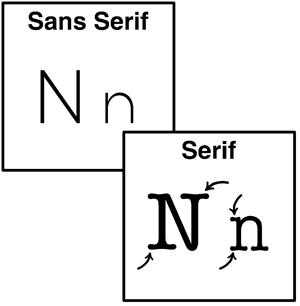
Plus, there are two basic types of fonts:
- Serif
- Sans serif
Serifs comprise the small features at the end of strokes within letters and are typically less formal and harder to read. So, stick to sans serif fonts including Arial, Helvetica, Times New Roman, Courier and more.
Also, vary the size and weight of the font you choose for your label design. For example, a bold or thicker character has a higher weight. Using different sizes and weights will help emphasize the most important information.
Contrast of Color and Typeface
Although color, typeface and font selection are important, effective contrast will further elevate the impact of your message. Contrast is the difference between foreground and background colors. The greater the contrast, the easier it is to see and the more your wording will stand out.
Use of Graphics and Icons
Similar to color and typeface, graphics can amplify the message you want to convey. But, with the limited amount of space available on the typical custom medical, they need to be used sparingly.
![]() For customer-facing labels, use your logo if possible. For medical labels that guide care, use an icon that reinforces the message.
For customer-facing labels, use your logo if possible. For medical labels that guide care, use an icon that reinforces the message.
Wording
Fewer more powerful words and the use of action verbs, when possible, will convey your message in the most effective way. In addition, minimize abbreviations and acronyms as not everyone knows what they mean. Lastly, for medical labels that require initialling, a signature or another type of manual entry, add a line after the text not before it. This will ensure - something that I need to research.
Label Size and Shape
Although there are dozens of potential label size and shape options to choose from, the amount of space available on the item will dictate the best option.
Label Finish
The label finish provides a number of benefits including protecting the label against moisture and chemicals, increasing its durability, enhancing the design and more.
You can learn more about the best size, shape and finishing options here.
Putting It All Together
Once you define the specifications, seeing how they work together will ensure you’ve made the right selections. It is important to see how your specifications work together to ensure you've made the right selections. You can opt for a graphic designer who can compile a file for your review or go to a label manufacturer that provides this service. Once you’ve finalized your design elements you’ll need to define a quantity to determine your total cost.
Another alternative is to use an online tool like the UAL Custom Label Designer (CLD). The CLD allows you to design and proof your label using a WYSIWYG format, which makes it easy even for a label novice to develop an effective design. Once you’ve established the design, the app will also calculate a price. And, when you’ve finalized the specifications, the CLD also allows you to place the order. Regardless of your label and design knowledge level, the CLD helps you quickly and easily design, price, proof and order the custom medical label you need.
United Ad Label
United Ad Label brings over 60 years of experience, strong supplier relationships and an unmatched array of print technologies that deliver economical, high-quality custom medical labels in quantities large and small. If you have questions or need to place an order, you can speak directly with our customer service team or use our Custom Label Designer app.
